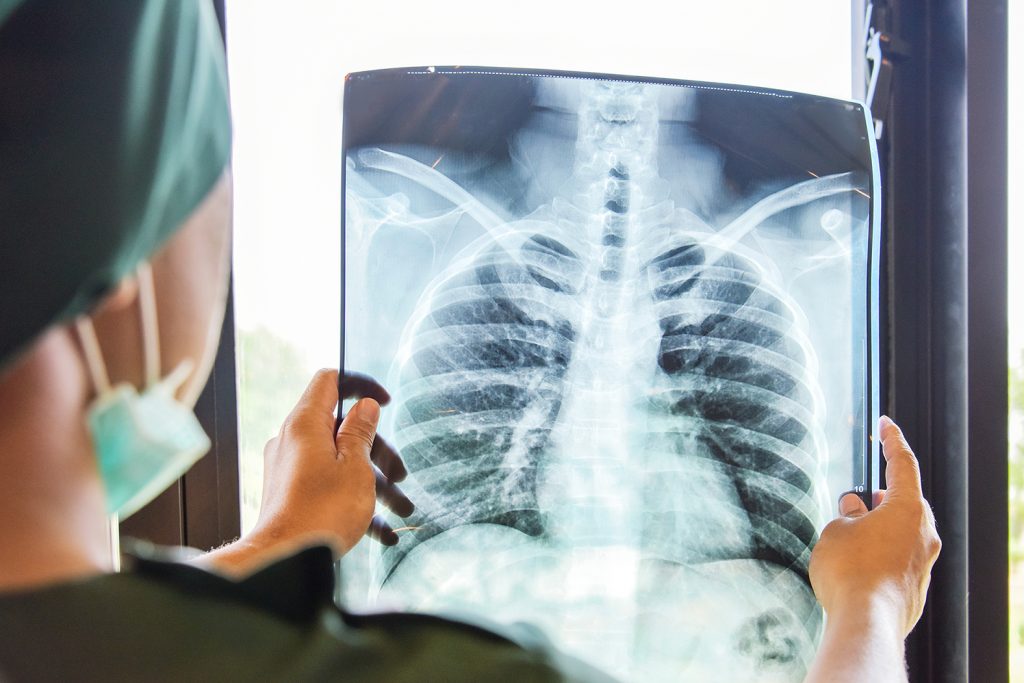Highly antimicrobial-resistant bacteria increase severity and mortality in patients with intensive care unit-acquired pneumonia

Antimicrobial resistance is a growing global health concern. The spread of antimicrobial resistant (AMR) pathogens means that the treatment of common infections is becoming increasingly complicated.1 Despite this, there remains little information on the relationship between infections by AMR pathogens and mortality.2
Hospital-acquired pneumonia (HAP) is one of the most common healthcare-associated infections (HAIs), accounting for about 22% of all HAIs.3 Mortality from HAP in intensive care units (ICUs), especially when caused by highly antimicrobial resistant (HAMR) bacteria, should be investigated to better elucidate treatment plans.
Aiming to compare mortality rates between patients with ICU-acquired pneumonia (IAP; includes HAP and ventilator-associated pneumonia in the ICU) due to HAMR and those with IAP due to non-HAMR bacteria, Lakbar et al. conducted a multicentre, retrospective cohort study using data from 200 ICUs in France.2 Data were collected from the French National Surveillance Network for Healthcare Associated Infection in ICUs database from January 2007 to December 2016. It included 18,497 adult patients with IAP who were hospitalised for a minimum of 48 hours. The pathogens causing these infections were Staphylococcus aureus, Enterobacteriaceae, Pseudomonas aeruginosa, or Acinetobacter baumannii. Key findings from their investigations are highlighted below2:
- 3081 (16.4%) patients had infections caused by HAMR bacteria.
- The HAMR group showed increased ICU mortality rates compared to the non-HAMR group (40.3% vs 30.0%, p<0.001).
- The increased risk in the HAMR group was still observed in the matched sample and after adjusting for confounding factors (p<0.001).
- Mean ICU stay durations were longer in the HAMR group compared to the non-HAMR group (37 ± 26 days vs 33 ± 26 days, p<0.001).
- Duration of mechanical ventilation was higher in the HAMR group (31 ± 26 days vs 27 ± 24 days, p<0.001).
Overall, the study found that ICU-acquired pneumonia caused by HAMR bacteria was associated with greater disease severity and mortality.2 The study had some notable limitations: some common pneumonia pathogens (streptococci and Gram-negative bacteria) were not included in the analysis, and the database did not have sufficient details on antimicrobial therapy provided. Despite this, the findings highlight the importance of continued antimicrobial stewardship and monitoring of infection trends in ICUs.
Current guidelines for HAP recommend the use of broad-spectrum antibiotics for late-onset pneumonia.4 In Labkar et al.’s study, there were more cases of late-onset pneumonia in the HAMR group, suggesting that more patients in the HAMR group may have received broad-spectrum treatments compared to the non-HAMR group which consisted mostly of earlier-onset pneumonia cases.3 The results from this study could better advise future guidelines for the treatment of IAP.
References
- World Health Organization. Antimicrobial resistance. Available at: https://www.who.int/news-room/fact-sheets/detail/antimicrobial-resistance. Accessed 3 September 2021.
- Labkar I, et al. Sci Rep 2021;11:16497
- Monegro AF, et al. Hospital Acquired Infections. Available at: https://www.ncbi.nlm.nih.gov/books/NBK441857/. Accessed 3 September 2021.
- Torres A, et al. Eur Resp J 2017;50:1700582










